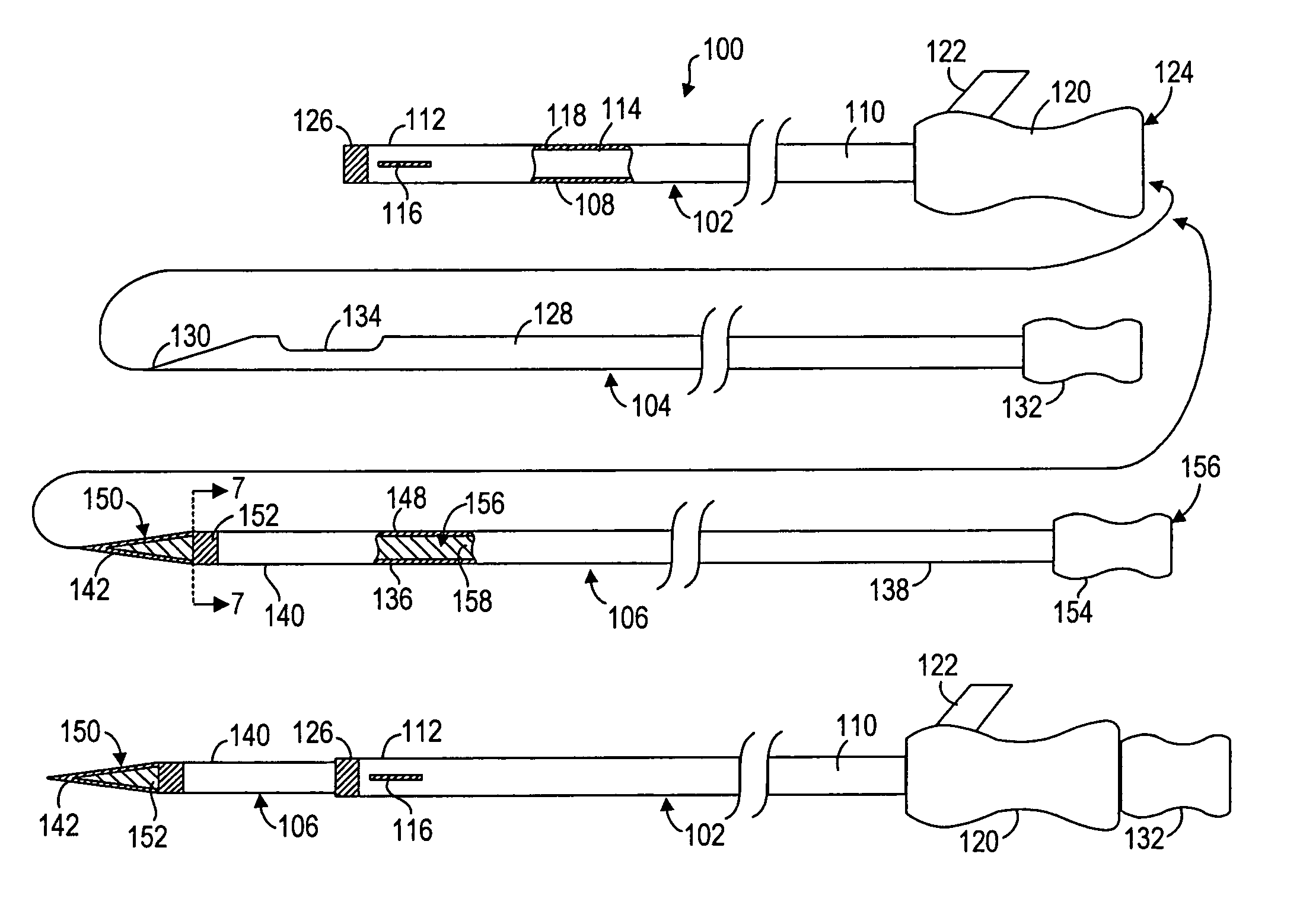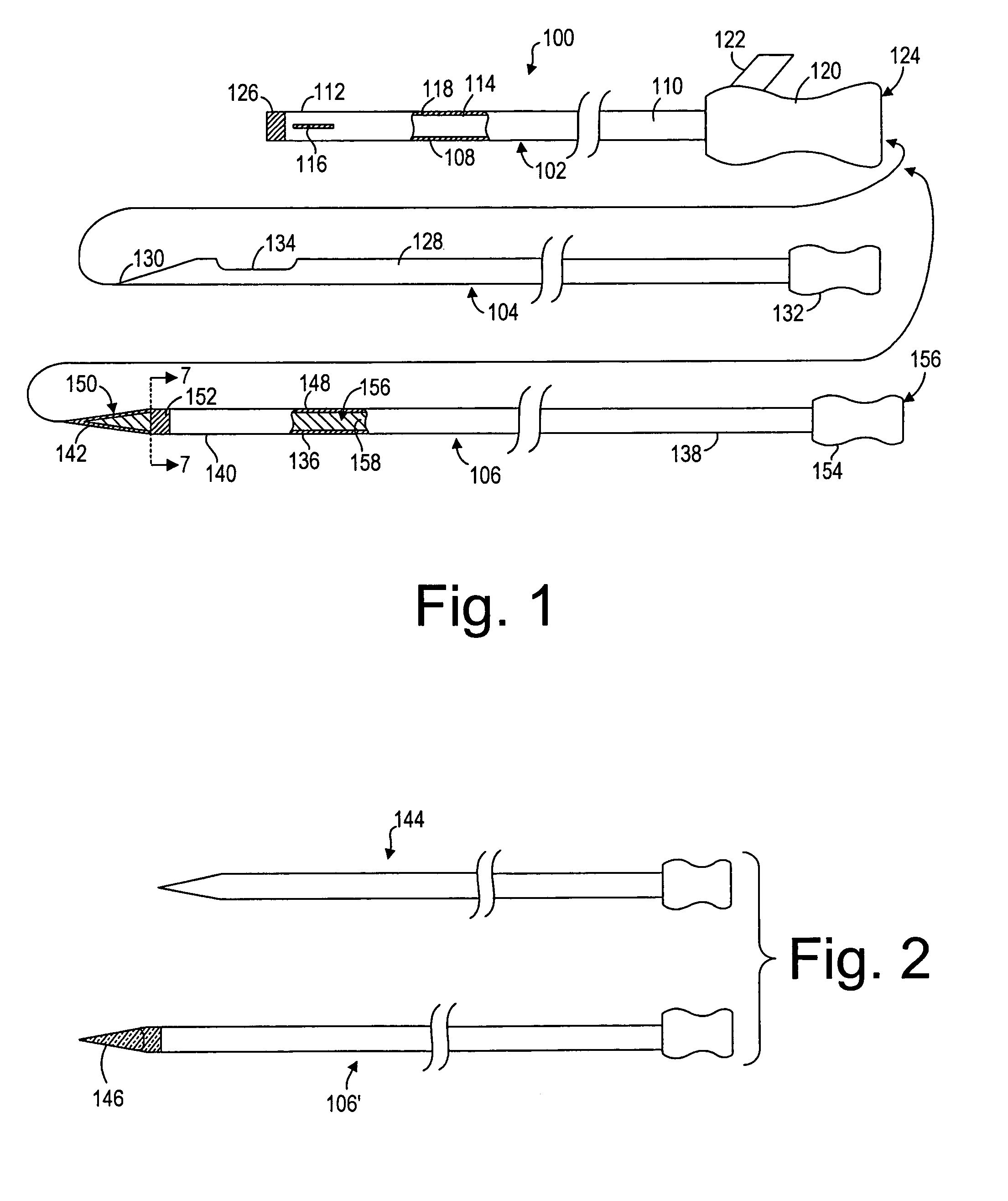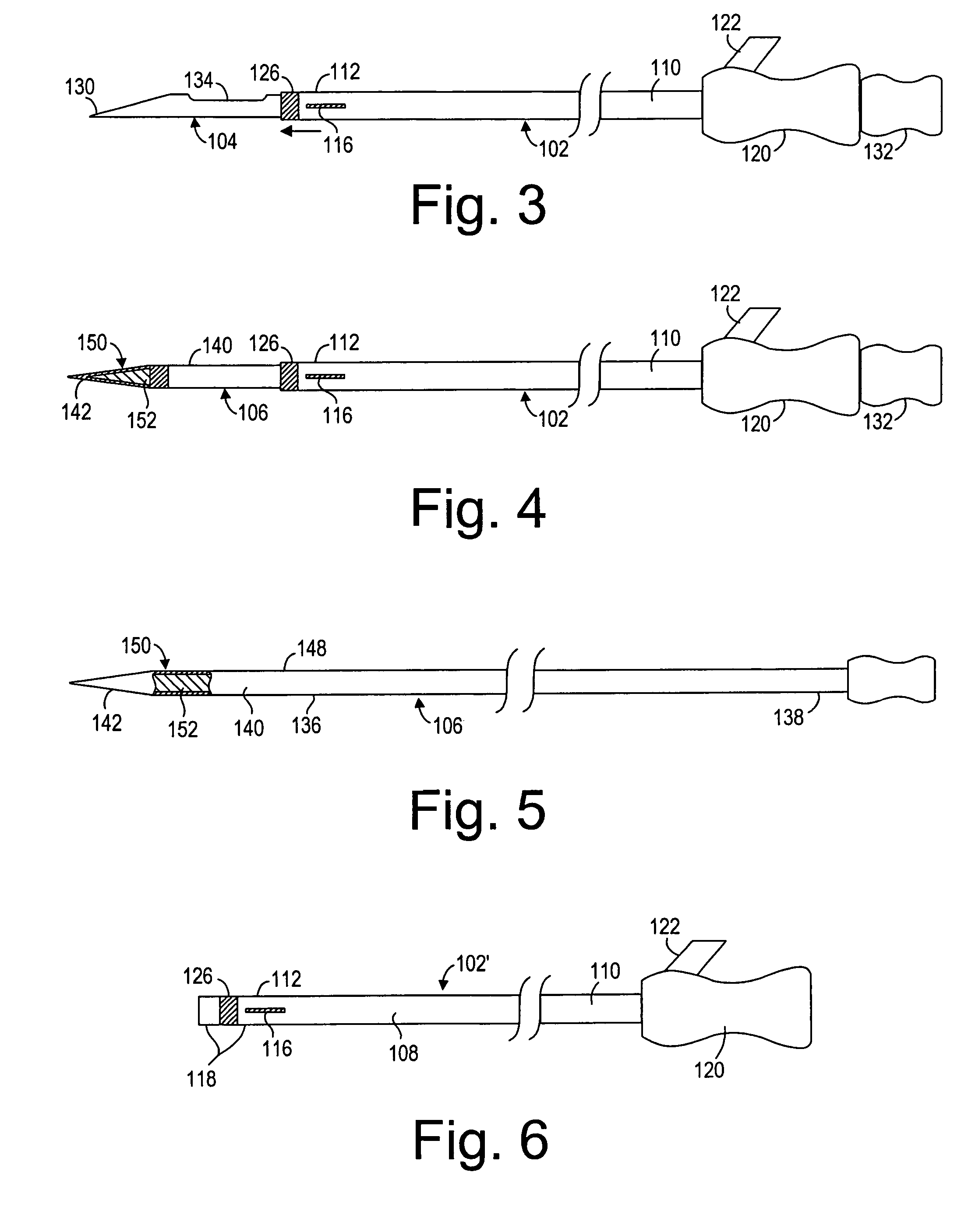Co-access bipolar ablation probe
a bipolar ablation and co-access technology, applied in the field of radio frequency (rf) ablation probes, can solve the problems of tumors that cannot be efficiently ablated using a standard bipolar ablation probe, pain in burns, tissue trauma, etc., and achieve the effect of improving the ablation process
- Summary
- Abstract
- Description
- Claims
- Application Information
AI Technical Summary
Benefits of technology
Problems solved by technology
Method used
Image
Examples
Embodiment Construction
[0026]FIG. 1 illustrates a tissue treatment kit 100 arranged in accordance with a preferred embodiment of the present invention. The tissue treatment kit 100 generally comprises a delivery cannula 102 that can be percutaneously introduced within a patient, a biopsy stylet 104 configured for removing a tissue sample from the patient, and an ablation probe 106 configured for therapeutically ablating tissue. The biopsy stylet 104 and ablation probe 106 are configured to be alternately introduced through the delivery cannula 102 in contact with the tissue to be treated.
[0027]The delivery cannula 102 comprises a cannula shaft 108 having a proximal end 110 and a distal end 112, and a delivery lumen 114 extending through the cannula shaft 108. As will be described in further detail below, the cannula shaft 108 may be rigid, semi-rigid, or flexible, depending upon the designed means for introducing the delivery cannula 102 to the target tissue. The distal end 112 of the cannula shaft 108 pr...
PUM
 Login to View More
Login to View More Abstract
Description
Claims
Application Information
 Login to View More
Login to View More - R&D
- Intellectual Property
- Life Sciences
- Materials
- Tech Scout
- Unparalleled Data Quality
- Higher Quality Content
- 60% Fewer Hallucinations
Browse by: Latest US Patents, China's latest patents, Technical Efficacy Thesaurus, Application Domain, Technology Topic, Popular Technical Reports.
© 2025 PatSnap. All rights reserved.Legal|Privacy policy|Modern Slavery Act Transparency Statement|Sitemap|About US| Contact US: help@patsnap.com



